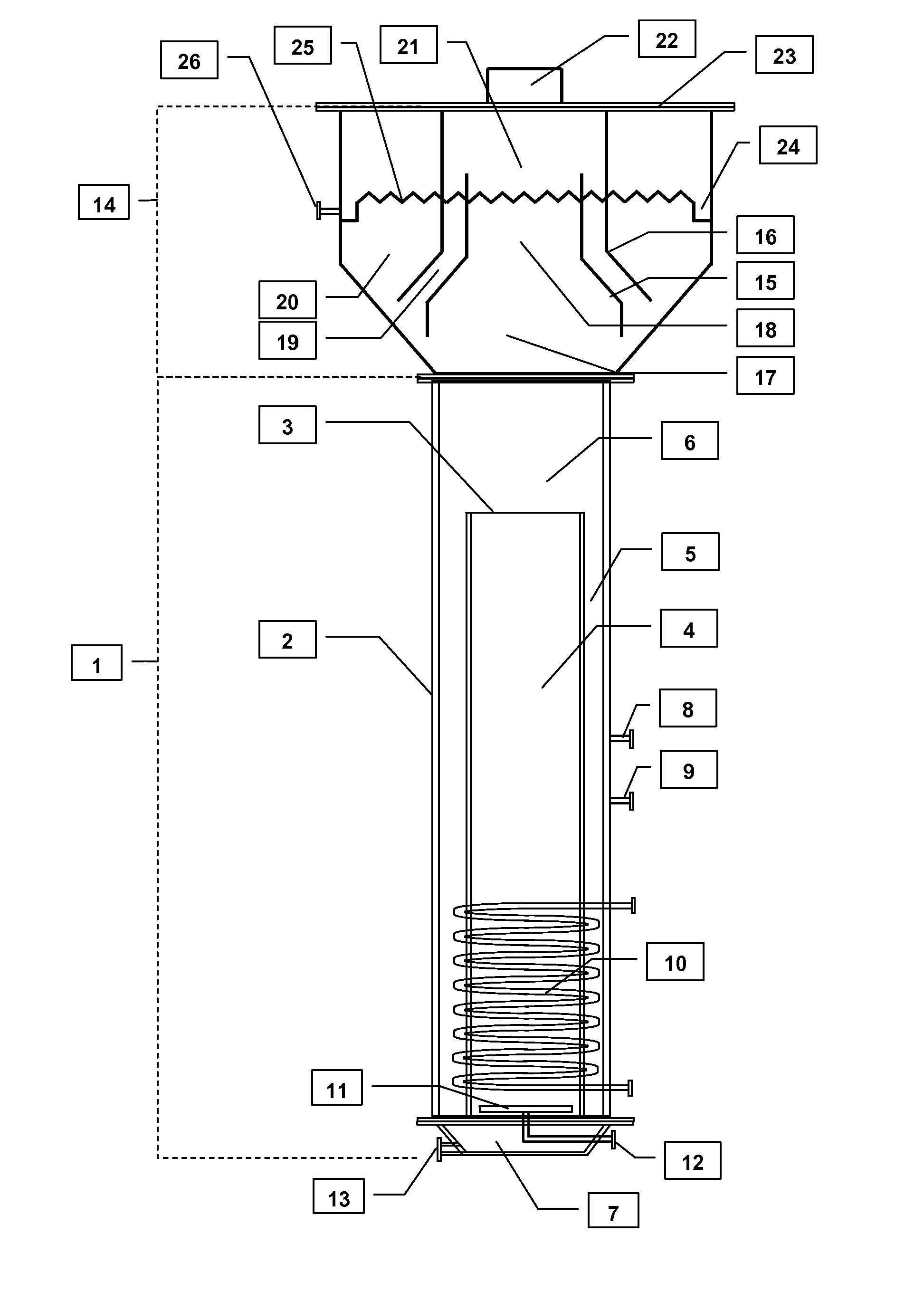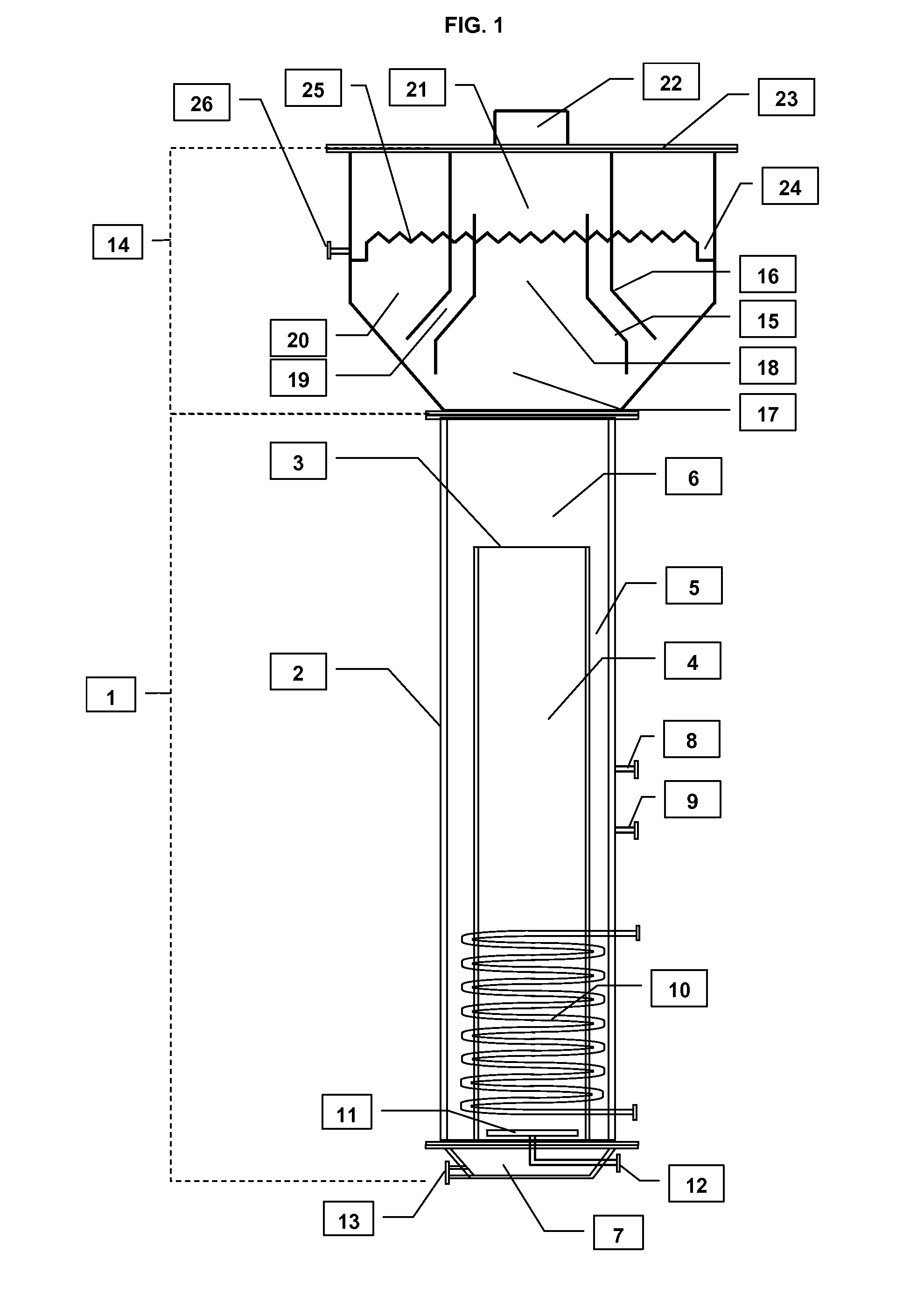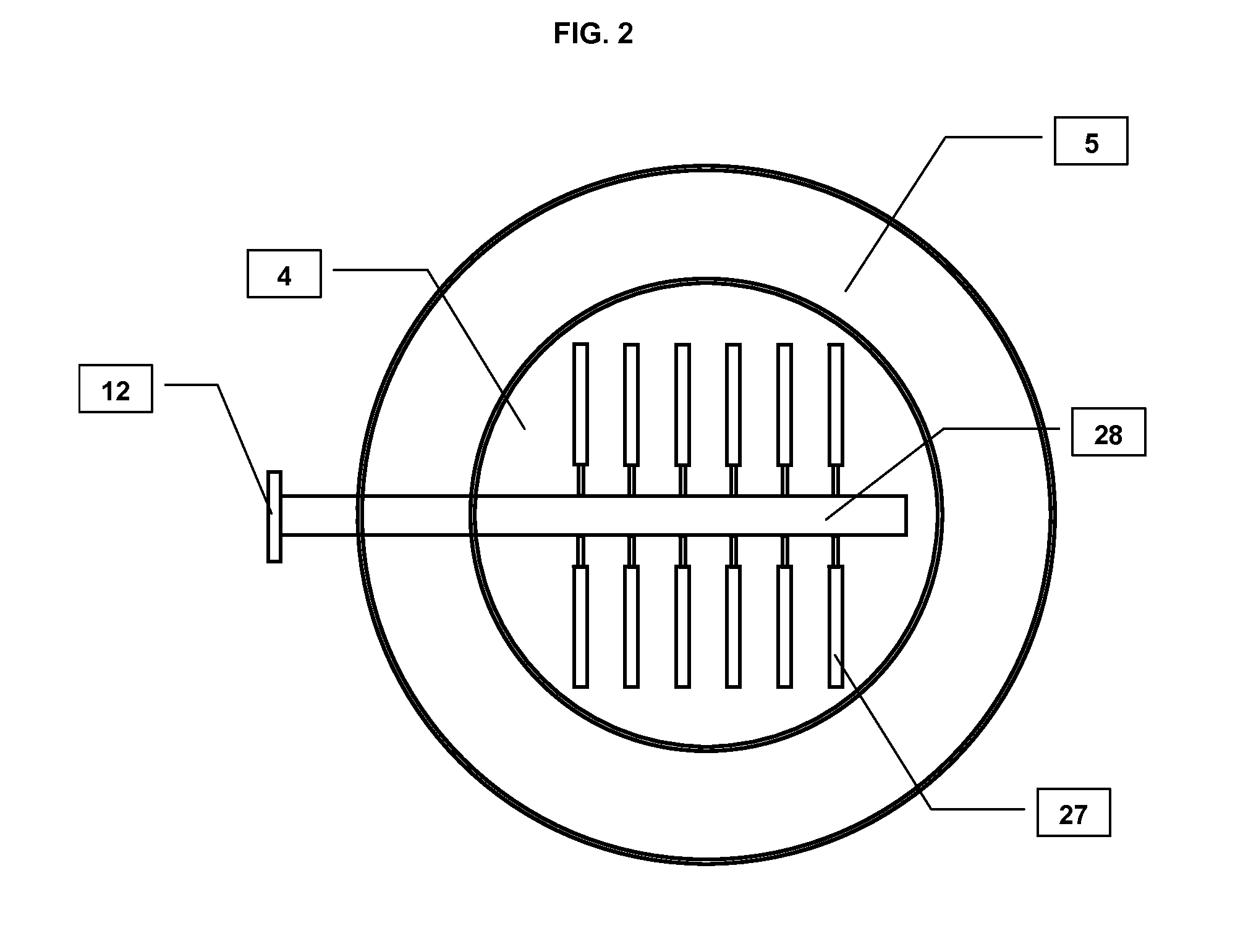Bioreactor for continuous production of bioleaching solutions for inoculation and irrigation of sulfide-ore bioleaching heaps and dumps
a bioreactor and bioleaching solution technology, applied in the direction of biochemistry equipment, biochemistry equipment and processes, enzymology/microbiology equipment, etc., can solve the problems of insufficient bioleaching conditions, inability to meet the needs of bioleaching, and high reactor cos
- Summary
- Abstract
- Description
- Claims
- Application Information
AI Technical Summary
Problems solved by technology
Method used
Image
Examples
example 1
[0084]A test of ferrous solution (25 g Fe(II) / L) oxidization and production of oxidizing microorganisms of the Leptospirillum genre was carried out in an air-lift bioreactor with a total volume of 256 L, in order to prove the capabilities of the air-lift bioreactor of the present invention. The protocol used in this test was the following.
[0085]The bioreactor used had a total volume of 256 L, of which the reaction volume was 131 L, and the phase separator volume was 125 L.
[0086]The culture media used in the propagation of the microorganisms had the following composition: 125 g FeSO4 / L, 0.25 g (NH4)2SO4 / L, 0.032 g NaH2PO4.H2O / L, 0.013 g KH2PO4 / L, 0.025 g MgSO4.7H2O / L, 0.005 g CaCl2 / L. The pH of the culture media was adjusted to 1.4.
[0087]To start the culture, 230 L of culture media were mixed with 20 L of inoculum carrying microorganisms of the Leptospirillum genre.
[0088]The biomass-support contents were 40 g / L, made up mainly by ferric precipitates, and to a lesser degree, of diatom...
PUM
| Property | Measurement | Unit |
|---|---|---|
| distance | aaaaa | aaaaa |
| distance | aaaaa | aaaaa |
| angle | aaaaa | aaaaa |
Abstract
Description
Claims
Application Information
 Login to View More
Login to View More - R&D
- Intellectual Property
- Life Sciences
- Materials
- Tech Scout
- Unparalleled Data Quality
- Higher Quality Content
- 60% Fewer Hallucinations
Browse by: Latest US Patents, China's latest patents, Technical Efficacy Thesaurus, Application Domain, Technology Topic, Popular Technical Reports.
© 2025 PatSnap. All rights reserved.Legal|Privacy policy|Modern Slavery Act Transparency Statement|Sitemap|About US| Contact US: help@patsnap.com



